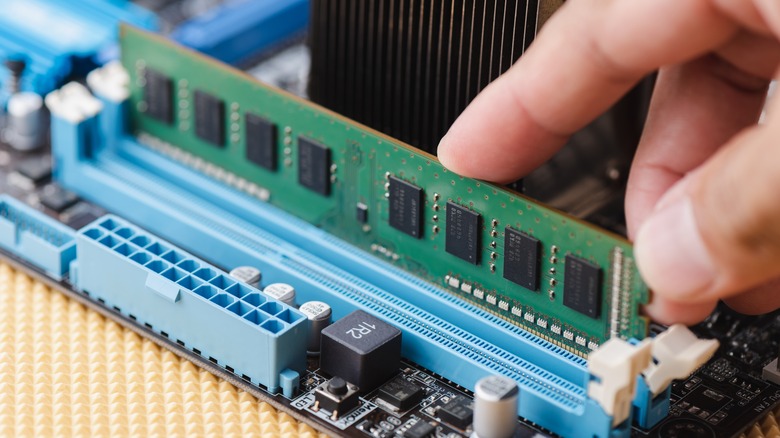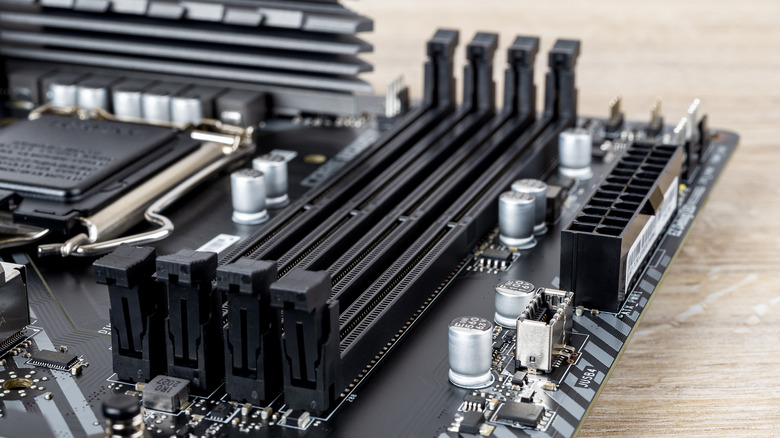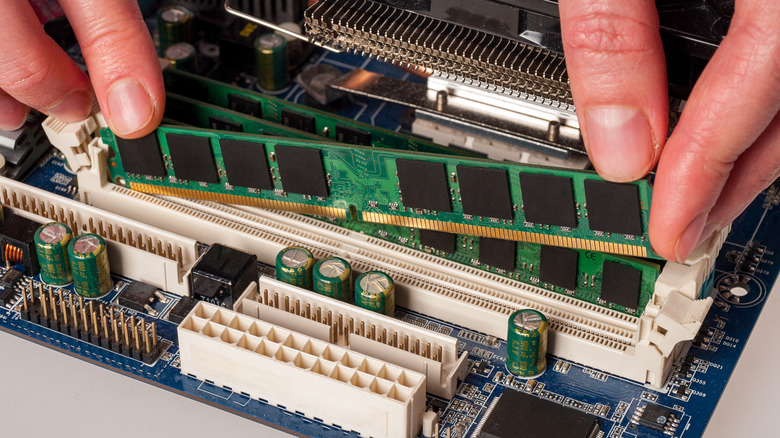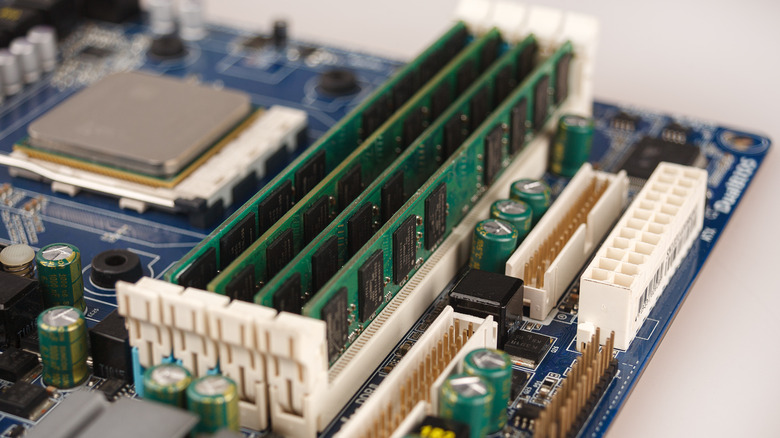How To Install RAM In Your PC (The Right Way)
Installing RAM in your PC is one of the easiest, yet most crucial tasks. Do it the right way, and you should have a faster, more responsive PC that is better at handling your commands. However, not installing the RAM correctly could render your machine useless.
RAM is short for "random access memory," where your computer temporarily stores the data required to run applications, open files, browse the internet, and almost everything else. RAM determines how many programs your system can run at once, and that is why installing more of it can give your PC the long-due performance boost it deserves.
Assuming you've determined how much memory the motherboard supports, which generation of RAM it has, and its frequency, we'll focus on installing it. Whether you're building a new PC or upgrading the RAM in your sluggish machine, the steps apply the same. Keep your toolkit ready, as you might need a screwdriver.
Locate the RAM slots
First, you should shut down the machine and unplug all the cables, especially the one that supplies power. Then, gently unscrew one side of the cabinet case or unlock it using the latch mechanism to access the motherboard.
Before you proceed, you should touch an unpainted metal surface to ground yourself. This prevents damage to any sensitive components due to static discharge from your body. Alternatively, you can also wear anti-static wristbands to prevent any discharge. Now, find the RAM slots: their position depends on your motherboard's make, but generally, you can locate them next to the CPU.
If you're replacing older sticks of RAM, note which slots the RAM is currently installed in, as you'll want to slot the new sticks in the same orientation. Otherwise, use every other RAM slot the furthest away from the CPU if you're slotting two RAM sticks.
Very carefully, unlock the latches or the plastic clips on both sides of the RAM slot. The right way to do this is by pushing down on the ends of the clips until they pop open, releasing the RAM stick. Once you open the latches on both sides, remove the existing RAM stick by pulling it with both hands so that it comes out straight.
While the slots sit empty, consider cleaning them with a soft brush or compressed air if that's available. If you're building a new PC, you don't need to clean the slot prior to installation. However, the steps to open the RAM slot latches still apply.
Align the RAM stick in the right orientation and place it
The next step is to fix the RAM stick in place. However, before that, remember which RAM slots you should fill first. Then, examine the RAM stick for a divot in the golden pins on one end. Further, look for the partition in the RAM slots.
Now, align the RAM stick on the slot so the divot falls on the partition, and with a firm hand, push the RAM in place. You should hear a satisfying clicking sound once the RAM is in the slot. If your PC is slightly older, you must close the plastic pins manually to lock the RAM modules in place. On newer models, the latches close as you insert the RAM sticks.
If the RAM doesn't fit in the first attempt, ensure it is facing the right way and try again with some force. Once the RAM stick falls into place, close the case or screw it back. Reconnect all the wires and boot up your PC.
Check if your system recognizes the RAM
Once you've reassembled the PC, it's time to turn it back on. Press the power button and wait for your system to boot up. Remember, your system could take time to recognize and add the new RAM to its resources. Hence, it's normal if it's taking more time than usual or if you have to restart a few times.
Your PC should work fine if the RAM stick is compatible and you've placed it correctly. Launch the Control Panel, head to the System and Security settings, and then choose System to see your device's configuration. If the memory displayed alongside "Installed RAM" matches what you've installed (and the previously available memory), the installation was successful.
However, if you see an error message on the startup screen or hear a series of beeps from the desktop itself, your system isn't recognizing the RAM. In this case, remove the RAM module, clean the slot, and place it back in. On the off chance that your PC doesn't boot, check if you've connected any wires you've disconnected back, especially the one that provides power to your system and/or cables that connect the motherboard to the storage drive.



